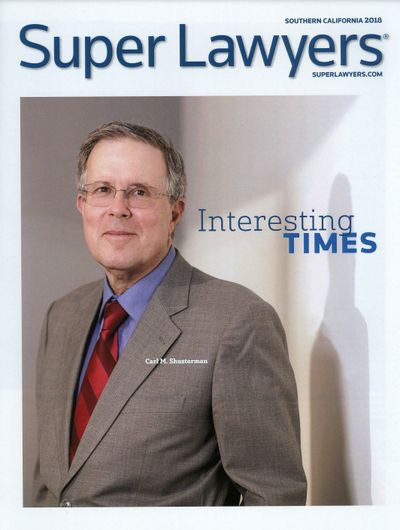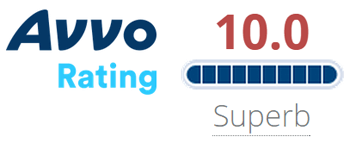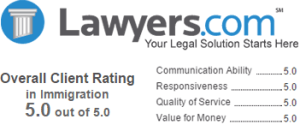
For the millions of people waiting in line in the employment-based and family-based categories, Attorney Carl Shusterman’s visa bulletin predictions give them an idea of when they will be able to apply for and obtain green cards.
The State Department has issued the July 2025 Visa Bulletin.
The State Department has confirmed that they plan to advance the cutoff dates conservatively to gauge demand at the start of Fiscal Year 2025, similar to how they approached Fiscal Year 2024. They also anticipated fewer available employment-based numbers in Fiscal Year 2025 compared to Fiscal Year 2024.
The State Department Visa Bulletin July 2025 shows backlogs in getting green cards in both the family and the employment-based categories. The time that it will take you to get a green card depends on the category of your petition and your country of birth. The Visa Bulletin is updated on a monthly basis.
You can stay up-to-date with Visa Bulletin by subscribing to our Free E-Mail Newsletter.
Visa Bulletin Predictions is divided into the following Topics:
- Visa Bulletin Predictions – Family-Based Categories
- Visa Bulletin Predictions – Employment-Based Categories
- Immigration Success Stories
Family-Based Categories – Visa Bulletin Predictions for August 2025
These visa bulletin predictions are estimates based on recent movements in the family-based categories and should not be relied upon as legal advice. They indicate how far forward the Final Action Dates may advance or retrogress in the coming month.
F-1 – Unmarried Adult Sons & Daughters of US Citizens
- Mexico – Little or No Forward Movement
- Philippines – Little or No Forward Movement
- All Other Countries – Little or No Forward Movement
F-2A – Spouses & Minor, Unmarried Sons & Daughters of LPRs
- Mexico – Little or No Forward Movement
- All Other Countries – Little or No Forward Movement
F-2B – Unmarried Adult Sons & Daughters of LPRs
- Mexico – Little or No Forward Movement
- Philippines – Little or No Forward Movement
- All Other Countries – Little or No Forward Movement
F-3 – Married Adult Sons & Daughters of US Citizens
- Mexico – Little or No Forward Movement
- Philippines – Little or No Forward Movement
- All Other Countries – Little or No Forward Movement
F-4 – Brother & Sisters of US Citizens
- Mexico – Little or No Forward Movement
- India – Little or No Forward Movement
- Philippines – Little or No Forward Movement
- All Other Countries – Little or No Forward Movement
NUMBERS FOR THE FAMILY-BASED PREFERENCE CATEGORIES
F1 Unmarried Adult Sons and Daughters of U.S. Citizens: 23,400 plus any numbers not required for fourth preference.
F2 Spouses and Children, and Unmarried Sons and Daughters of Permanent Residents: 114,200, plus the number (if any) by which the worldwide family preference level exceeds 226,000, plus any unused first preference numbers:
F2A Spouses and Children of Permanent Residents: 77% of the overall second preference limitation, of which 75% are exempt from the per-country limit;
F2B Unmarried Adult Sons and Daughters of Permanent Residents: 23% of the overall second preference limitation.
F3 Married Sons and Daughters of U.S. Citizens: 23,400, plus any numbers not required by first and second preferences.
F4 Brothers and Sisters of Adult U.S. Citizens: 65,000, plus any numbers not required by first three preferences.
Employment-Based Categories – Visa Bulletin Predictions for August 2025
These visa bulletin predictions are estimates based on recent movements in the employment-based categories and should not be relied upon as legal advice.
According to the U.S. State Department: “High demand in the Employment Second category will most likely necessitate retrogression of the worldwide final action date (including Mexico and Philippines) in the next month to hold number use within the maximum allowed under the Fiscal Year 2024 annual limit. This situation will be continually monitored, and any necessary adjustments will be made accordingly.”
And
“High demand in the Employment Third category will most likely necessitate retrogression of the worldwide final action date (including Mexico and Philippines) in the next month to hold number use within the maximum allowed under the Fiscal Year 2024 annual limit. This situation will be continually monitored, and any necessary adjustments will be made accordingly.”
EB-1 Priority Workers
- India – Little or No Forward Movement
- China – Little or No Forward Movement
- All Other Countries – Little or No Forward Movement
EB-2 Members of the Professions Holding Advanced Degrees or Persons of Exceptional Ability
- India – Little or No Forward Movement
- China – Little or No Forward Movement
- All Other Countries – Little or No Forward Movement
EB-3 Professionals and Skilled Workers
- India – Little or No Forward Movement
- China – Little or No Forward Movement
- All Other Countries – Little or No Forward Movement
NUMBERS FOR THE EMPLOYMENT-BASED PREFERENCE CATEGORIES
EB-1 Priority Workers: 28.6% of the worldwide employment-based preference level, plus any numbers not required for fourth and fifth preferences.
EB-2 Members of the Professions Holding Advanced Degrees or Persons of Exceptional Ability: 28.6% of the worldwide employment-based preference level, plus any numbers not required by first preference.
EB-3 Skilled Workers, Professionals, and Other Workers: 28.6% of the worldwide level, plus any numbers not required by first and second preferences, not more than 10,000 of which to “*Other Workers”.
EB-4 Certain Special Immigrants: 7.1% of the worldwide level.
EB-5 Employment Creation: 7.1% of the worldwide level, of which 32% are reserved as follows: 20% reserved for qualified immigrants who invest in a rural area; 10% reserved for qualified immigrants who invest in a high unemployment area; and 2% reserved for qualified immigrants who invest in infrastructure projects. The remaining 68% are unreserved and are allotted for all other qualified immigrants.
The 7% Per-Country Cap
For the family and employment preference categories, the law imposes a limit on how many immigrants from any particular country can receive green cards in a given year. No country can receive more than 7% of the total number of EB and FB preference visas in a given year. There are no per-country limits for immediate relatives of U.S. citizens.
Because of the numerical caps and per-country caps on certain green-card categories, there are significant waits for some categories, with sharper effects on a few countries.
The wait for U.S. citizens to sponsor their brothers and sisters is more than 15 years for most parts of the world, but is 20 years for siblings from the Philippines and more than 22 years for those from Mexico.
There are millions of people waiting in line abroad for family-sponsored green cards. There are hundreds of thousands of people waiting employment-sponsored green cards. Most of these persons are residing in the US on temporary working visas. However, when their children turn 21 years old, many of them are no longer able to maintain lawful immigration status in the U.S. and risk becoming separated from their families.
As of June 2023, there were more than 1.2 million employment-based immigrants stuck in green card backlogs.
Please the tables below:
| EB-1 (Priority) | EB-2 (Professional) | EB-3 (Professional and Skilled) | EB-3 (Other) | |
|---|---|---|---|---|
| China | 5,762 | 40,039 | 21,695 | 1,327 |
| India | 10,049 | 426,465 | 133,409 | 252 |
| Mexico | 0 | 889 | 886 | 5,383 |
| Phillippines | 0 | 307 | 8,331 | 2,772 |
| Rest of World | 0 | 25,292 | 12,602 | 16,409 |
| Total | 15,811 | 492,992 | 176,923 | 26,143 |
| EB-4 (Special Immigrants) | EB-4 (Religious Workers) | EB-5 (Investors) | Total Principal Applicants | Total Individuals in Backlog (including dependents) | |
|---|---|---|---|---|---|
| China | 718 | 136 | 18,880 | 88,557 | 134,172 |
| India | 2,100 | 333 | 2,157 | 574,765 | 862,363 |
| Mexico | 7,646 | 230 | 0 | 15,034 | 20,150 |
| Phillippines | 386 | 107 | 0 | 11,903 | 18,311 |
| Rest of World | 122,934 | 2,432 | 0 | 179,669 | 234,388 |
| Total | 133,784 | 3,238 | 21,037 | 869,928 | 1,269,384 |
Immigration Success Stories









